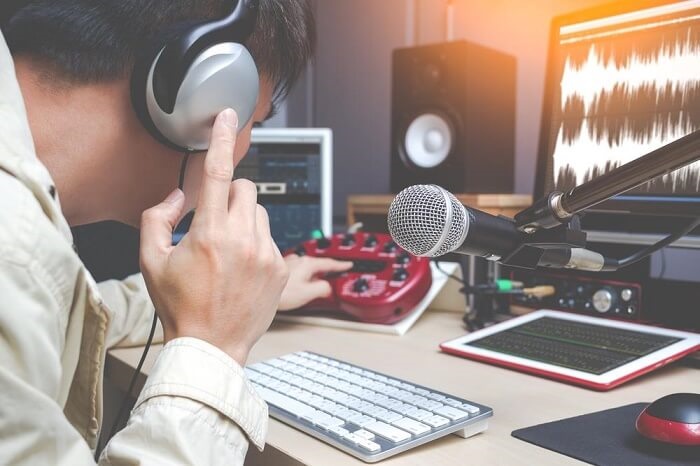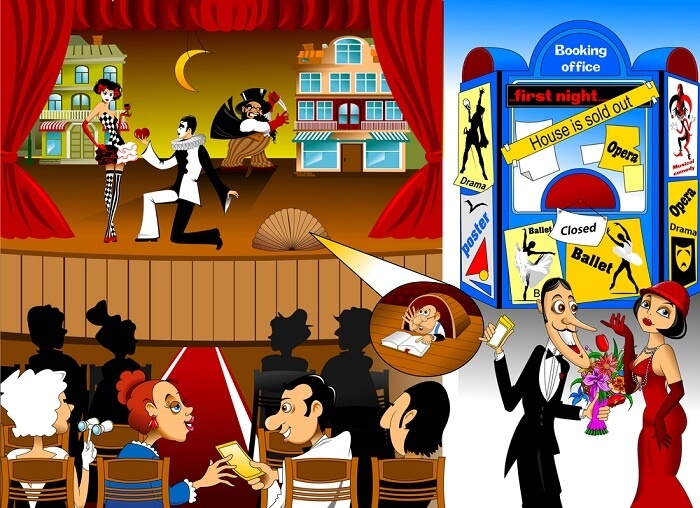A voice over is a technique used to give narration to a scene that does not include an actor. It can also give a voice to things and animals that may not otherwise have one. Voice overs and animal voice overs can be observed in many cartoons and animated films . By removing the need for an actual actor, the story line and characters are given a wider range of possibilities. A voice over artist that can successfully give life to characters through animal voice overs can have a lengthy and lucrative career. However, the amount of competition is pretty fierce. A lot of times a company will opt for a well known voice from actors who are recognized on film and television. This is because people already recognize them and their distinctive voice can exude a specific quality.
If there is so much competition in this field, how do you get your foot in the door to do animal voice overs? What steps can you take to become successful? This article will give you some helpful tips and tricks to get you headed in the right direction towards your career doing animal voice overs.

9 Tips on How to do an Animal Voice Over
1. Familiarize Yourself with Your Script
A good way to get comfortable for animal voice overs is to read over your script several times. You should also try to view the video clip you will be providing the voice over for. That way you can see the length of time you have to say a line. You can also see if you are interacting with another character or responding to a cue.
A little preparation can really make a difference. This is because you will not be surprised with anything and will in turn sound much more natural while reading your lines.
2. Your Voice’s Role
Generally speaking, there are two types of voice overs that are used on film.
- The first is conversational. This is when your character is interacting with other things. Your voice will need to sound clear and natural as if you are speaking with another character or to the audience in conversation.
- The second is called a hard sell or announcer voice over. Here your voice should bear a significant amount of authority. Typically this type is used for advertising and commercials. It is used to grab the viewer’s attention and give them important information.
More than likely if you are picked for animal voice overs, you will be using the conversational speech to convey the script.
3. The Right Tools for the Job
Investing in some good equipment including a microphone and computer is a very good idea. Most microphones that are integrated into your computer can give a medium quality recording. Sometimes that is fine. However, to really get noticed, the better quality recording you can showcase, the more likely someone will take notice.
Good quality microphones are available and can directly plug into the USB port of your computer. There are also more expensive high quality microphones that can be coupled with audio mixers that can really give you some more high tech options. Don’t forget that you will need a decent quality sound card for your computer that can handle the better equipment. You will also need compatible software to run the programs and equipment. An optional piece of equipment that is very helpful is a windscreen. These are like filters that help stop the sound of your breathing from hitting the microphone and ending up in your recording.

4. Practice Makes Perfect
Treat the role from animal voice overs just like you would a regular acting job. Read your script over and over until you have basically memorized your lines. Record yourself and listen to it play back so that you can make adjustments to the way you deliver your lines. Even though you will not have to hit marks, deliver convincing facial expressions.
You can also use your physical acting in order to do your voice over, sometimes it helps to just let those expressions come through. You will find that you can hear the difference if you let yourself get into the role the same way you get into a standard acting role.
5. Control Your Breathing
Similarly to a singer that has to regulate their breathing, you will find the need to do the same as you do your animal voice over. An audible breath heard in the middle of a sentence is very distracting. It also comes across as being very unprofessional. A good rule of thumb is to turn your head away from the microphone when you feel the need to inhale heavily or exhale hard enough that you will likely be picked up on the recording.
There are a lot of programs that include methods to remove these types of breathing sounds. However, it is time consuming to have to go through and take them out. If you can avoid them all together or at least minimize them, it is a good idea to do so.
6. Learn Your Software
Doing animal voice overs may come with some sound engineer duties. You should take the time to learn to the software you are using so that you can make your voice sound as good as possible. This will take some time to master. But you can improve your skills over time. However, it is a good idea to learn the basics and some tricks to clean up, balance, and tweak your recordings.
At first you may only learn how to balance the tone of your voice by adjusting your EQ and the volume. Once you get more comfortable with the programs you can experiment with sound effects and other special adjustments that are possible. There are many tutorials you can find online that will be able to walk you through many types of audio tricks.
7. Keep Your Tone Interesting
Without being able to use your body and expression to convey your message, your voice has to bring interest to the table so that you do not lose the audience’s attention. Thus, it is important to pay attention to your pitch and inflection. Pitch is the tone in your voice. Inflections are variations of that one, the highs and lows. If you are completely monotone you will sound boring. Animal voice overs with pitch and inflection will sound conversational or even sing-songy. It is pleasant to listen to and adds depth and interest for the audience.
Inflection can be successfully used to highlight parts of your speech, to emphasize important parts, or stress certain information. It will bring things that you really want to impact the audience to the forefront.
8. Slow It Down Speed Racer
Another aspect of your voice you need to keep in check is your speed. Certain scenes during your animal voice overs may be at a higher energy and will necessitate a faster pace. Other times a gentle or sentimental moment may require a slower and more comforting speed. Be aware of those moments so that you can relay the appropriate message.
Some of us naturally have a faster speaking pace. This is not ideal for a normal voice over since the audience needs to be able to follow along. Record yourself reading your lines to make sure your speed matches the scene. If not, make a note in your script to remind yourself to adjust.

9. Other Vocal Aspects
- Volume control is also an important part of your voice that you should be aware of. You should be able to speak loud enough that the audience can clearly hear you. However, you do not want to speak so loudly that it comes across as yelling. This is unless of course the script calls for yelling.
- Rhythm and fluency also come into play. These terms refer to the fluidity of your speaking. You do not want your lines to sound broken up. There should be a natural flow to your sentences. This is one reason to be very familiar with your lines. If you know what is coming next, you are already naturally ready to say the next thought and it will create that fluidity you are looking for. Use any commas and periods as stopping points to catch your breath and prepare yourself by reading ahead.
- A final vocal point to keep in mind is emotion. Voice overs often call for a specific feeling to be expressed. Without the help of your facial expressions, you voice has to do all the work. Practice delivering the different emotions needed within your script to be more effective.
To the Voice
Being an artist specialized in animal voice overs can be a rewarding acting path. If you give yourself the necessary tools and software, it can give you a leg up on the competition. Practice your lines like you are going to act them out. Allow yourself to be extra expressive while keeping the nuances of your tone and volume in check and you will have a winning combination.
How did you find success in voice over acting? Did you have difficulty getting your foot in the door? Share your experiences with others looking to succeed in this unique career choice.
Images: depositphotos.com.